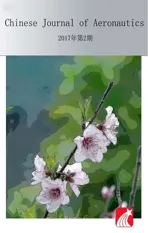A new model to simulate infrared radiation from an aircraft exhaust system
2017-11-20ZhouYueWangQiangLiTing
Zhou Yue,Wang Qiang,Li Ting
aSchool of Energy and Power Engineering,Beihang University,Beijing 100083,China
bCollaborative Innovation Center for Advanced Aero-Engine,Beijing 100083,China
A new model to simulate infrared radiation from an aircraft exhaust system
Zhou Yuea,*,Wang Qianga,b,Li Tinga,b
aSchool of Energy and Power Engineering,Beihang University,Beijing 100083,China
bCollaborative Innovation Center for Advanced Aero-Engine,Beijing 100083,China
Computational efficiency;Infrared radiation;k-distribution;Multi-scale method;Radiative contribution
A multi-scale narrow band correlated-kdistribution(MSNBCK)model is developed to simulate infrared radiation(IR)from an exhaust system of a typical aircraft engine.In this model,an approximate approach instead of statistically uncorrelated assumption is used to treat overlapping bands in gas mixture.It significantly reduces the requirement for computing power through converting the exponential increase of computing power consumption with the increase of participating gas species to linear increase.Besides,MSNBCK model has a great advantage compared with conventional methods which can estimate each species’contribution to the total gas mixture radiation intensity.Line by line(LBL)results,experimental data and other results in the references are used to evaluate this new model,which demonstrates its advantage in terms of accuracy and computing efficiency.By coupling this model and finite volume method(FVM)into radiative transfer equation(RTE),a comparative study is conducted to simulate IR signature from the exhaust system.The results indicate that wall’s IR emission should be considered in both 3–5 lm and 8–14 lm bands while gases’IR emission plays an important role only in 3–5 lm band.For plume IR radiation,carbon dioxide’s emission is much more significant than that of water vapor in both 3–5 lm and 8–14 lm bands.Especially in 3–5 lm band,the water vapor’s IR signal can even be neglected compared with that of carbon dioxide.
1.Introduction
Infrared stealth is one of important abilities for aircraft to prevail in modern air battle.IR emission from the exhaust system takes a great proportion in the total IR emission of an aircraft.Therefore,accurate prediction of IR signature from an exhaust system is of great significance for IR detection and aircraft propulsion system design.
IR emission from a specific exhaust system can be attributed to two parts:hot plume IR emission and high temperature engine parts IR emission,such as that of nozzle,and turbineblades.Compared with high temperature engine parts,radiation from the hot plume is much more complicated,since carbon dioxide and water vapor’s IR emission plays a major role,which shows non-gray characteristics.With respect to nongray gas radiative calculation,LBL method is conducted using detailed information of every needed spectral line from a high resolution spectroscopic database;therefore it is recognized as the most accurate method.1However,the disadvantage of this method is also very obvious,and it requires huge amount of computing power which makes it impractical to be applied to the real world.For this reason,different models have been developed to provide relatively accurate yet efficient calculations.From the functional standpoint,all these models can be divided into two kinds:one is for calculating thermal radiation such as Weighted-Sum-of-Gray-Gases(WSGG)model,2Spectral Line Based Weighted Sum of Gray Gases(SLW)model,3–6absorption distribution function(ADF)model7and full-spectrumk-distribution(FSK)model8,9and the other is for IR signal calculation such as statistical narrow band(SNB)model10,11and narrow bandk-distribution(NBK)model.12The output parameter of SNB model is transmissivity,which is suitable for ray tracing RTE solver,but it is diff icult to couple with differential methods such as finite volume method and discrete coordinate method.Besides,the SNB model is also incompatible with scattering from particles or soot in the plume even though different strategies have been tried to solve this issue.13,14In comparison,NBK model provides absorption coefficient as model output parameter which can be coupled with arbitrary RTE solution method and deal with scattering simultaneously.The principle of NBK model is that provided the medium is homogeneous and for a narrow band which is sufficiently narrow to assume a constant Planck function,the absorption coefficient can be reordered into a smooth and monotonically increasing function so that integration over the narrow band can be replaced by an integral scheme with several points.Compared with spectral evaluations for LBL,NBK model provides an efficient way to reduce the computational costs,but it is limited to calculate single homogeneous medium.Two methods have been used to deal with non-homogeneous gas,i.e.correlated-k(CK)method and scaling approximation,and the CK method assumes that the maximum absorption coefficients across the spectrum under investigation always occur at the same wavenumber,regardless of the temperature,pressure and mole fraction,15and are suitable for all intermediate values.The scaling approximation is inherently similar to CK method but more precise in mathematical terms.Because of less restrictiveness and acceptable accuracy,the CK method is widely used in both full spectrum and narrow band,forming FSCK model and NBCK or SNBCK model.16,17For all band models,treatment of overlapping bands in gas mixture is always somewhat problematic.One conventional approach is statistically uncorrelated assumption,i.e.transmissivity of a gas mixture can be obtained by multiplying transmissivity of each species.This turned to be true for narrow band but the computational costs become expensive by a factor ofNMwhereNis the number of integral points in solving RTE andMthe number of participating gases.Depending on different assumptions,some approximate mixing models such as convolution,multiplication,superposition and hybrid approaches have also been proposed by Solovjov and Webb to deal with gas mixture’s radiation in full spectrum.18Besides,Modest and Riazzi calculated the mixture’s cumulativek-distribution function based on the multiplication of transmissivities and property of Laplace transformation.19Instead of treating the mixture as a single gas,it is noted that a multi-scale approach is applied in full spectrum to calculate radiation emitted by a certain gas but absorbed by all the gases.This is an approximate way but which finally achieved both reasonable accuracy and computational efficiency.20Above all,it increases computational costs by a factor ofM∙N,but to date,the multi-scale concept is mainly used in full spectrum with several different models having been derived.21–23
In this paper,we present a narrow band model based on the CK method and multi-scale method,and to the best of the author’s knowledge,such a combination(MSNBCK)has not been carried out in the past.Experimental and LBL results will serve as a benchmark to validate the accuracy ofk-distribution method.When dealing with overlapping bands in gas mixture,the MSNBCK model is evaluated by comparison with exact LBL results and SNB model combined with statistical uncorrelated assumption for both isothermal and non-isothermal cases.Using the Finite Volume Method(FVM)to solve RTE and MSNBCK model and describe the property of non-gray gas mixture,simulation of the infrared signature from a realistic three-dimensional aircraft engine is conducted.Absorption coefficients of participating species are calculated from the spectroscopic database HITEMP 2010 in advance and all the IR calculation process in this paper is accomplished using C program.
2.Numerical modeling and validation
The radiative transfer equation for an absorbing,emitting and scattering medium is written as1



in which e is the wall’s emissivity,Ibgwradiative intensity of the black wall and n the corresponding surface normal vector.
2.1.k-distribution and spectral reordering
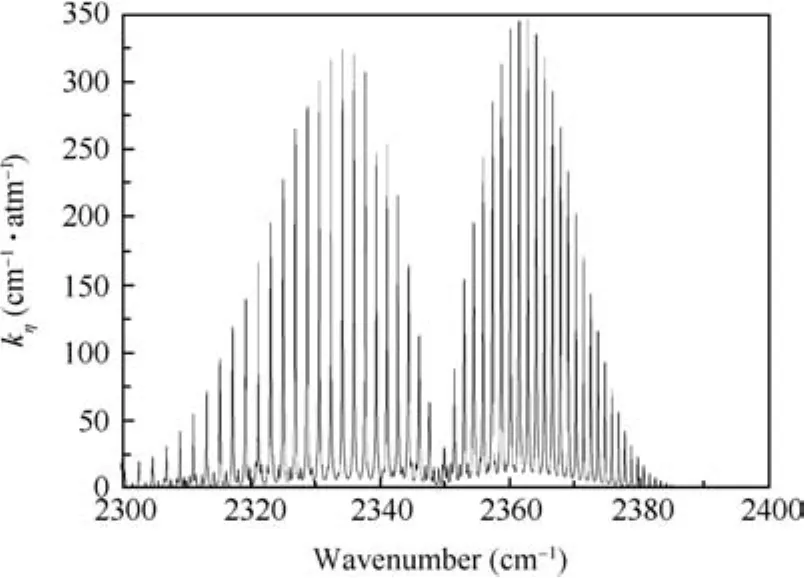
Fig.1 Absorption coefficient of CO2in 4.3 lm band.
For a givenkvalue,thek-distribution functionfðkÞ is defined as





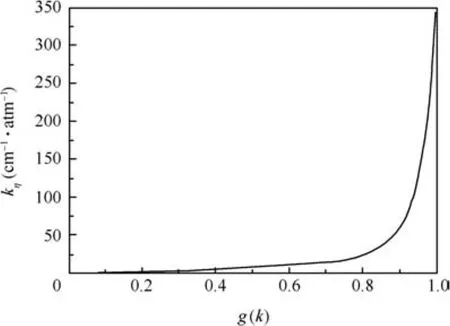
Fig.2 Cumulative k-distribution function corresponding to Fig.1.

which progressively represents fraction of the spectrum whose absorption coefficient lies below the value ofk.




in whichLis the length of gas layer.Eqs.(7)and(8)can be easily calculated through numerical integration method.For this paper,all the numerical integration is accomplished via 7-point Gauss integral scheme.The experimental data measured by Bharadwaj et al.24–27Exponential Wide Band(EWB)results28and LBL results are used here for the validation ofk-distribution and spectral reordering.Table 1 shows the conditions under which the measurements and calculations are taken.
For all conditions,both measured and calculated data are shown in Fig.3,among which the NBK model represents results usingk-distribution method.Generally,the predicted band transmissivity calculated by NBK model and LBL agreed with the measured values very well while the NBK model takes much less computational costs than LBL.For the present case,the bandwidth of NBK model is 4 cm?1and the wavenumber resolution of LBL is 0.01 cm?1,which means transmissivity needs to be calculated 7 times for NBK model and 400 times for LBL method to obtain an average transmissivity in Eq.(8).In contrast,the EWB model treated transmissivity as a constant and calculated it only once across a certain band,but loss of detailed spectral information and larger errors are also inevitable(Fig.3).

Table 1 Description of calculated and measured conditions.
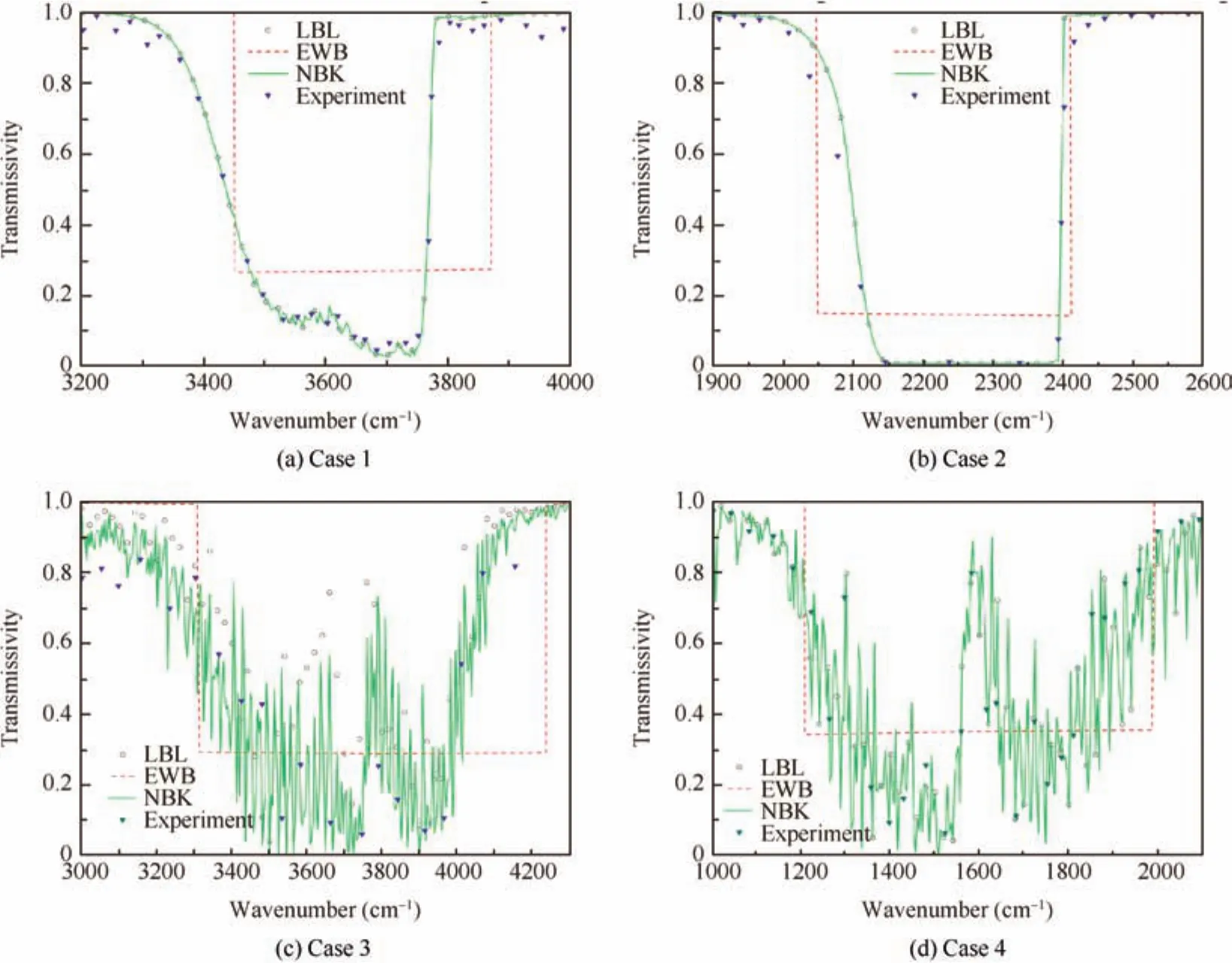
Fig.3 Comparison of band transmissivity for cases in Table 1.

Fig.4 Absorption coefficients at two different temperatures.
2.2.Correlated-k(CK)method for non-isothermal gas
In Section 2.1,thek-distribution method is used for isothermal gas and is not straightforward to be applied to non-isothermal medium.To overcome this limitation,the CK method assumes that thek-distribution functions are ‘correlated” regardless of temperatures.15It implies that the ups and downs of the absorption coefficient curve have the same pattern even if temperature changes.This method has been proven very successful in the atmosphere29;however,the appearance of‘hot lines”at high temperature makes the pattern of absorption coefficient curve not strictly match that at low temperature(Fig.4).
Lack of correlation fails to provide accurate results when CK method is combined with full spectrum(FSCK)to calculate cases with large temperature gradients,and thus the multi-group method is subsequently put forward to solve this problem,which has obtained good accuracy.22,30In the multi-group method,the spectrum is broken up into different groups according to the temperature dependence of absorption coefficients,such grouping ensuresthatthe absorption coefficients in every group closely follow the rule of correlation,and CK method is then used in each group.To examine the accuracy of CK method combined with narrow bandk-distribution model(written as NBCK)as well as the necessity of multi-group method for narrow band,the NBCK model and multi-group NBCK model(written as MGNBCK)are used to calculate narrow band intensities in the following cases.

The results of Figs.5 and 6 indicate that both NBCK model and MGNBCK model predict the integrated intensity in nonisothermal gas very well.Although the accuracy of NBCK model is not as good as MGNBCK model,its maximum error is still quite small as shown in Figs.5(b)and 6(b).Results of NBCK model also prove that the CK method in a narrow band is still acceptable although it is not strictly rigid,which is consistent with the conclusion in Ref.16 to some extent.For MGNBCK model,the present grouping number is 4 as used in Ref.30 and integral scheme is 7-point Gauss integration,which means that the RTE needs to be solved 4?7 times in every narrow band.In comparison,the NBCK model treats every narrow band as a whole group and the RTE needs to be solved just 7 times.Considering the accuracy and computational efficiency together,the NBCK model is a good approach and isused to calculateradiation ofnonisothermal gases in the following part.
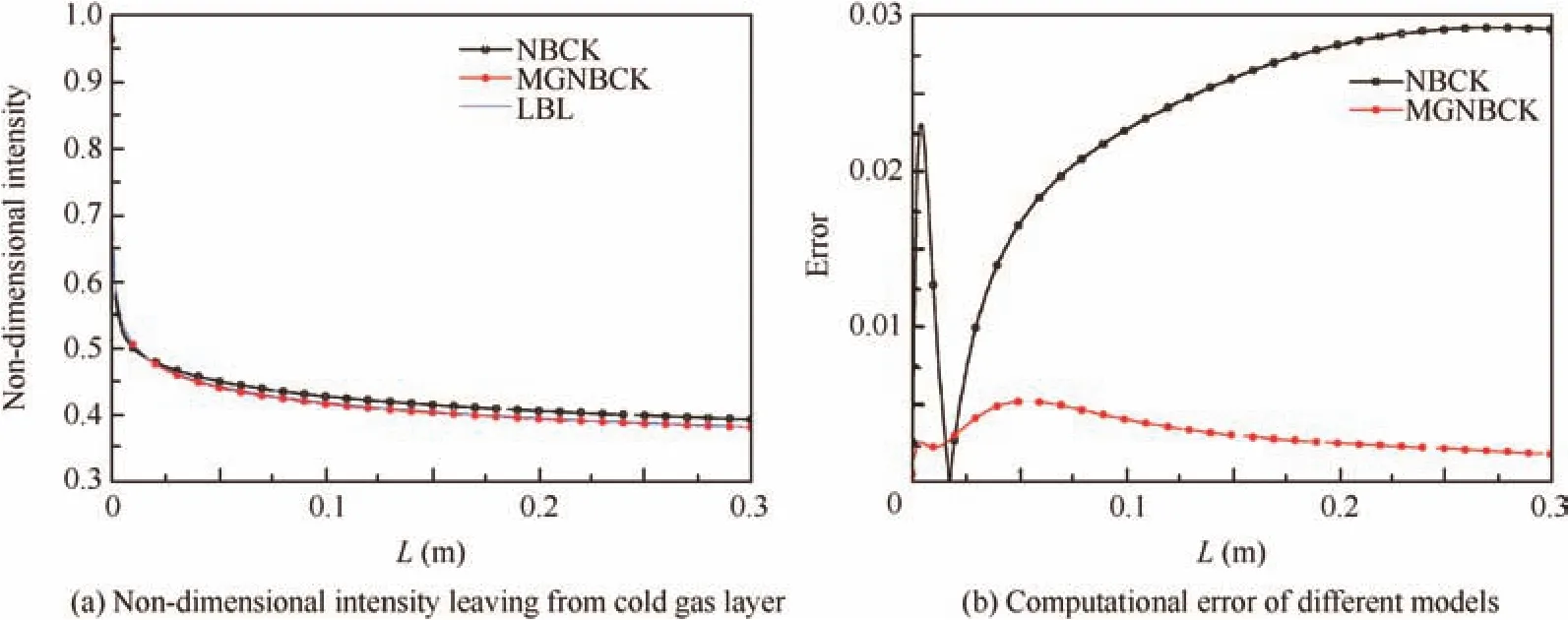
Fig.5 Computational results of hot layer at 1500 K.
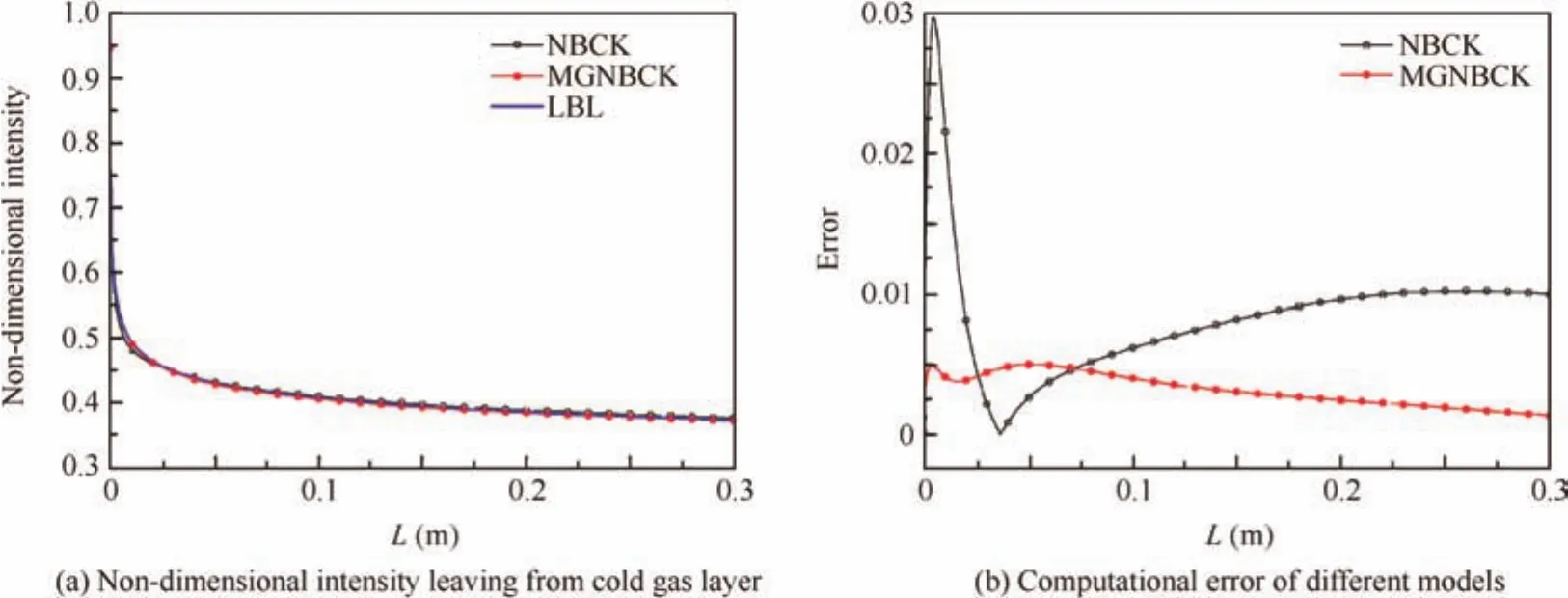
Fig.6 Computational results of hot layer at 2000 K.
2.3.Treatments of gas mixture
When radiation calculations in gas mixture are performed,the NBK model is not straightforward to be used without any premise.It is mainly because spectral properties of each participating gas are often quite different and overlapping in certain bands,which leads to unknown cumulativek-distribution functiong(k)for gas mixture.To solve this problem,the conventional method:statistical uncorrelated assumption and the new method:multi-scale method will be discussed as follows.
2.3.1.Statistical uncorrelated assumption
The statistical uncorrelated assumption believes that the total transmissivity of an overlapping band obeys the multiplication property,

whereIdenotes the total number of individual gas species.Applying Eq.(9)and NBK model to a gas mixture of CO2and H2O,the mixture’s transmissivity can be written as

where x is the quadrature weight of a gauss integral point,kcithe absorption coefficient of carbon dioxide at Gauss intagration pointi,khjthe absorption coefficient of water vapor at Gauss integration pointj,and this implies that the RTE becomes



2.3.2.Multi-scale method
For gas mixture,scattering effects can be neglected in Eq.(1),the absorption coefficientkgand radiative intensityIgare summation fromMsingle gas,and accordingly,the total RTE can then be separated intoMindividuals as Eq.(13).



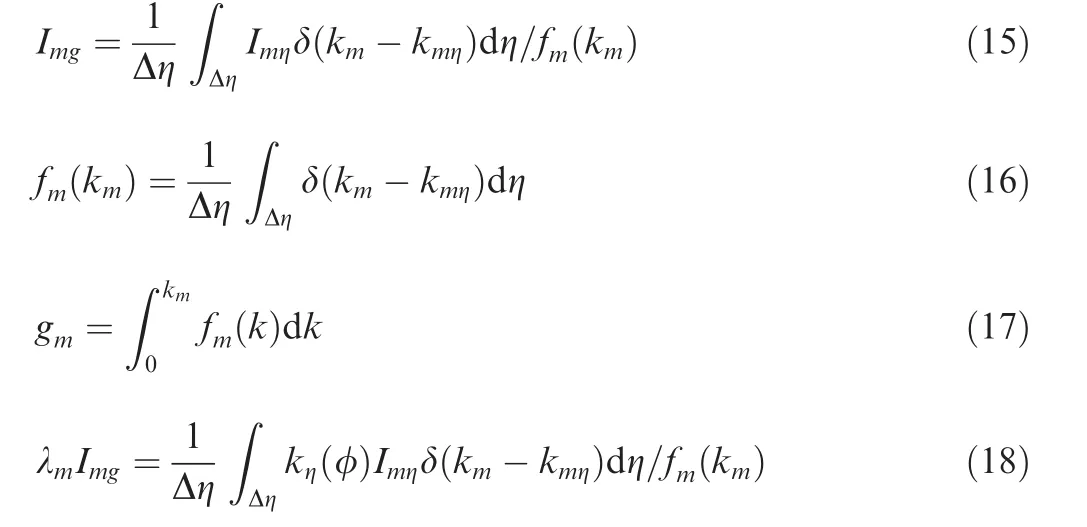

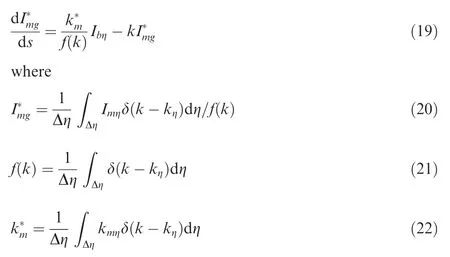



Eq.(26)provides the relationship betweenkmand km.To determine km,Eq.(26)is integrated on both sides.

Although Eq.(27)is an implicit equation,kmcan be determined through numerical integration and linear interpolation.
In practical application of multi-scale method,radiative intensity,which is emitted by every single gas(water vapor or carbon dioxide)and absorbed by the total gas mixture,is firstly calculated,and then the single intensity is added together to obtain the total intensity as shown in Eq.(28).


2.3.3.Validation of MSNBCK model


Case 2:the gas mixture contains 10%CO2,20%H2O and 70%N2(mole fraction),and temperature of the gas varied obeying the rule


2.4.RTE solver
Considering the compatibility ofk-distribution model,finite volume method is used to solve RTE and this method is briefly summarized in this section.Eq.(1)is integrated over volumeVand solid angle X:


Fig.7 Computational results for isothermal gas mixture.
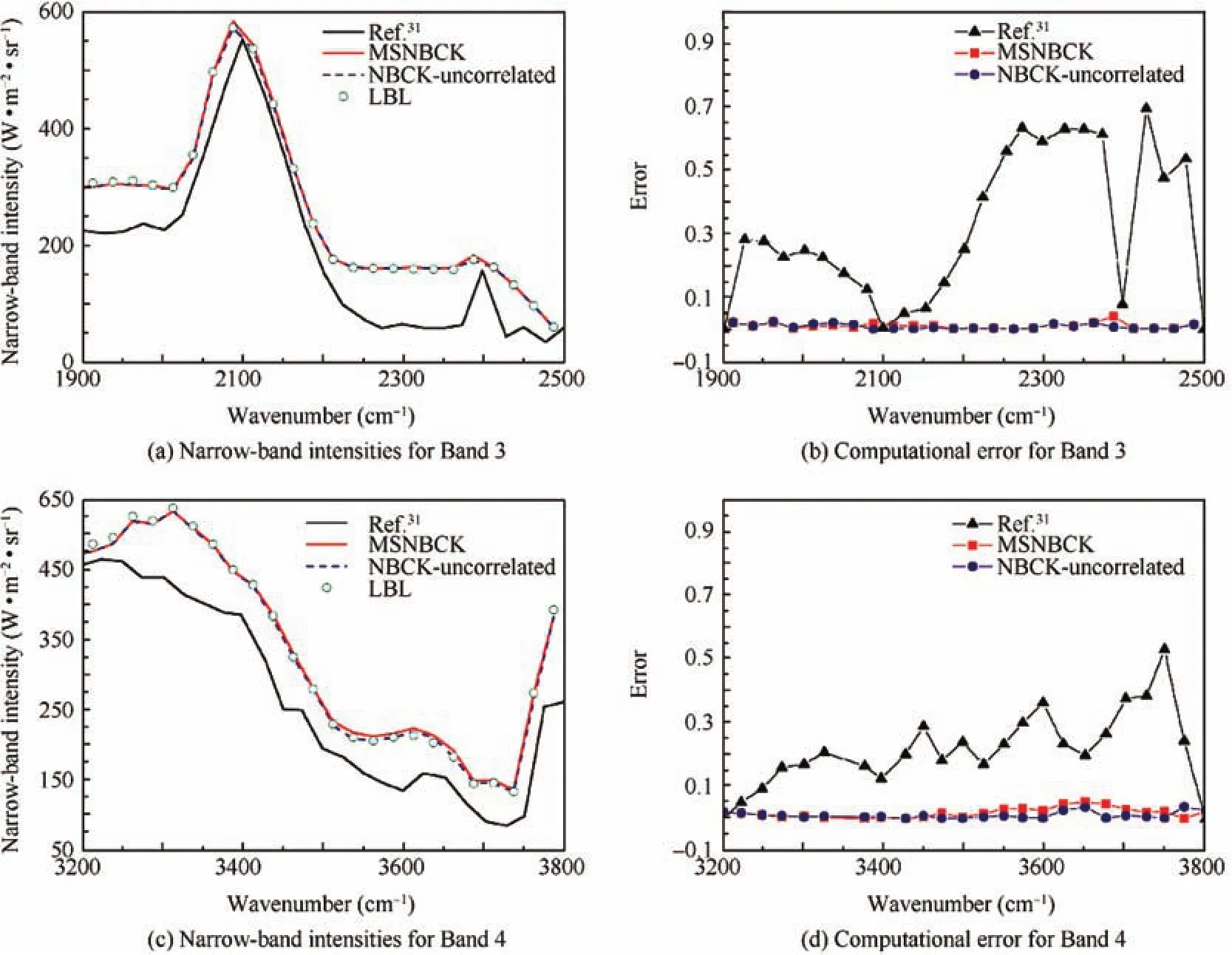
Fig.8 Computational results for non-isothermal gas mixture.

Table 2 Computational time of different models.ms.
whereAis the cell’s surface and n the corresponding outward face normal vector.Assume that the intensity and radiative properties within the control volume and solid angle are constant,which can be characterized by the value at cell centerP,and Eq.(29)turns to be

whereAiis the area of cell’si-th surface,Ig;Aithe intensity at the surface center.First-order step scheme shown as Eq.(31)is chosen to link the relationship between cell-surface intensities and cell-center intensities.

Then the discretization form of RTE is obtained as follows:

where
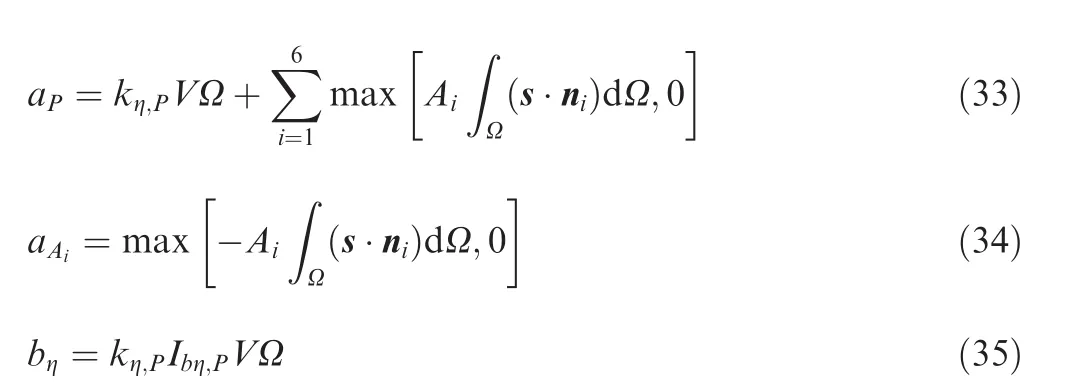

3.Application and discussion
3.1.Three-dimensional CFD simulations


Fig.9 Exhaust system 3D model and radiative direction definition.
For a typical condition,the fuel is C12H23;fuel–air ratio is 0.0202;free-stream values used are temperatureT=288 K,pressureP=101325 Pa and velocityMa=0.8;gas temperature at nozzle inlet is 800 K with a velocity 110 m/s;the wall is adiabatic.Three-dimensional CFD simulations are conducted using Fluent.Fig.10 demonstrates the distribution of static temperature,static pressure,mole fraction of carbon dioxide and mole fraction of water vapor.Considering symmetry of the jet flow,only a half cross-section is shown in Fig.10.
3.2.Radiative characteristics of gas mixture


Fig.10 Distribution of nozzle’s thermodynamic parameters.

Fig.11 Intensity distribution of




Fig.12 Intensity distribution of 8–14 lm band
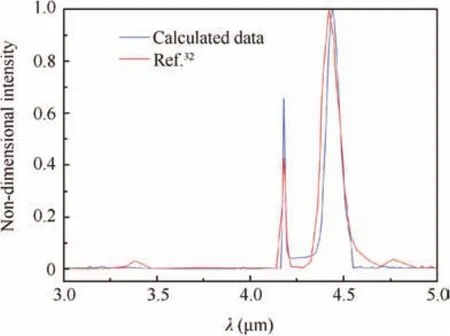
Fig.13 Validation of spectral characteristics of plume.

Fig.14 Plume spectral intensity attenuated by atmosphere.
3.3.Role of gas mixture and solid walls in radiation process



Fig.15 Intensity distribution emitted by gas mixture and solid walls

Fig.16 Intensity distribution emitted by gas mixture

Fig.17 Intensity distribution emitted by gas mixture and solid walls with wall’s emission

Fig.18 Intensity distribution emitted by gas mixture without wall’s emission
4.Conclusions
A numerical study is carried out to predict the IR signature from an engine exhaust system.Combining thek-distribution and multi-scale method in narrow band,we develop a MSNBCK model to calculate radiative properties of gas mixture.According to the relevant analysis of numerical results,several conclusions are listed as follows:
(1)Compared with statistically uncorrelated assumption to treat radiation in overlapping bands,the MSNBCK model is constructed based on the physical interaction effects between different participating species.According to LBL and experimental data in reference,the new model shows satisfactory accuracy,saving tremendous computation time through converting the exponential increase of computation time with the number of participating species to linear increase.In addition,the new model provides a solution to investigate the individual species’contribution to the total intensity of gas mixture.
(2)Compared with emission in 3–5 lm band,the plume’s radiative effects in 8–14 lm band is too weak to make an influence.No matter the interested band is 3–5 lm or 8–14 lm,carbon dioxide always plays a more important role than water vapor,which provides a theoretical conclusion that less carbon content in aviation kerosene helps to reduce infrared signature of aircraft.
(3)IR emission from solid walls always greatly enhances the exhaust system’s radiation for both 3–5 lm and 8–14 lm bands since its spectral intensity is more intense and continuous.Especially,the walls’IR makes a significant difference for 8–14 lm band because both nozzle external surface and hot parts of engine show effective emission in this band.
1.Modest MF.Radiative heat transfer.San Diego:Academic Press;2013.p.325–6.
2.Modest MF,Haworth DC.Radiative heat transfer in turbulent combustion systems:theory and applications.New York:Springer Press;2016.
3.Denison MK,Webb BW.An absorption-line blackbody distribution function for efficient calculation of total gas radiative transfer.J Quant Spectrosc Radiat Transf1993;50(5):499–510.
4.Chu H,Liu F,Consalvi JL.Relationship between the spectral line based weighted-sum-of-gray-gases model and the full spectrumkdistribution model.J Quant Spectrosc Radiat Transf2014;143(8):111–20.
5.Doner N,Selc¸uk N.An application of spectral line-based weighted sum of grey gases(SLW)model with geometric optics approximation for radiative heat transfer in 3-D participating media.Appl Therm Eng2013;50(1):89–93.
6.Denison MK,Webb BW.The spectral-line-based weighted-sumof-gray-gases model in non-isothermal non-homogeneous media.J Heat Transf1995;117(2):359–65.
7.Pierrot L,Soufiani A,Taine J.Accuracy of narrow-band and global models for radiative transfer in H2O,CO2,and H2O-CO2-mixture at high temperature.J Quant Spectrosc Radiat Transf1999;62(5):523–48.
8.Modest MF,Zhang H.The full-spectrum correlate-d-kdistribution for thermal radiation from molecular gas-particulate mixture.J Heat Transf2002;124(1):30–8.
9.Pal G,Modest MF,Wang L.Hybrid full-spectrum correlated kdistribution method for radiative transfer in strongly non-homogeneous gas mixture.J Quant Spectrosc Radiat Transf2008;130(8):2701–8.
10.Levy Y,Lev M,Ovcharenko V.Study of infrared CO2radiation from liquid-fueled combustor.J Heat Transf2005;128(5):478–83.11.Hu HY,Wang Q.A numerical simulation on the infrared radiation of hot exhausting nozzles with a coupled flow and heat transfer model.Sci China(Technol Sci)2010;53(10):2699–707.
12.Wang AQ,Modest MF.High accuracy,compact database of narrow-bandk-distributions for water vapor and carbon dioxide.J Quant Spectrosc Radiat Transf2005;93(1):245–61.
13.Hiers RS,Cromwell III BK,Zaccardi VA.Compatibility of infrared band models with scattering.J Thermophys Heat Transf1994;8(2):208–15.
14.Liu F,Smallwood GJ,Oslash,Guacute M,lder.Application of statistical narrowband model to three-dimensional absorbingemitting-scattering media.J Thermophys Heat Transf1999;13(3):285–91.
15.Lacis AA,Oinas VA.Description of the correlated-kdistribution method for modeling non-gray gaseous absorption,thermal emission,and multiple scattering in vertically inhomogeneous atmospheres.J Geophys Res Atmos1991;96(5):9027–63.
16.Modest MF.Narrow-band and full-spectrumk-distributions for radiative heat transfer correlated-kvs.scaling approximation.J Quant Spectrosc Radiat Transf2002;76(1):69–83.
17.Faycal BN,Akram M,Kamel C.Application of the statistical narrow-band correlated-kmodel to entropy generation through non-grey gas radiation inside a spherical enclosure.Int J Exergy2011;8(2):128–47.
18.Solovjov VP,Webb BW.SLW modeling of radiative transfer in multicomponent gas mixtures.J Quant Spectrosc Radiat Transf2000;65(4):655–72.
19.Modest MF,Riazz RJ.Assembly full spectrumk-distribution from a narrow band database:effects of mixing gases,gases and non-gray absorbing particles and non-gray scatters in non-gray enclosures.J Quant Spectrosc Radiat Transf2005;90(2):169–89.
20.Zhang HM,Modest MF.A multi-scale full-spectrum correlated-kdistribution for radiative heat transfer in inhomogeneous gas mixture.J Quant Spectrosc Radiat Transf2002;73(2–5):349–60.
21.Wang LY,Modest MF.Narrow-band based multiscale fullspectrumk-distribution method for radiative transfer in inhomogeneous gas mixture.J Heat Transf2005;127(7):740–8.
22.Gopalendu P,Modest MF.A narrow band-based multiscale multigroup full-spectrumk-distribution method for radiative transfer in non-homogeneous gas-soot mixture.J Heat Transf2010;132(2):291–303.
23.Roger M,Crouseilles N.A dynamic multi-scale model for transient radiative transfer calculations.J Quant Spectrosc Radiat Transf2013;116(1):110–21.
24.Modest MF,Bharadwaj SP.Medium resolution transmission measurements of CO2at high temperature.J Quant Spectrosc Radiat Transf2002;73(2–5):329–38.
25.Modest MF,Bharadwaj SP.Medium resolution transmission measurements of CO2at high temperature-an update.J Quant Spectrosc Radiat Transf2007;103(1):146–55.
26.Bharadwaj SP,Modest MF,Riazzi RJ.Medium resolution transmission measurements of water vapor at high temperature.J Heat Transf2006;128(4):374–81.
27.Bharadwaj SP.Medium resolution transmission measurements of CO2and H2O at high temperature and a multiscale Malkmus model for treatment of inhomogeneous gas paths[dissertation].Philadelphia:Pennsylvania State University;2005.
28.Edwards DK,Balakrishnan A.Thermal radiation by combustion gases.Int J Heat Mass Transf1973;16(1):25–40.
29.Fu Q,Liou KN.On the correlatedk-distribution method for radiative transfer in nonhomogeneous atmosphere.J Atmos Sci1992;49(22):2139–56.
30.Zhang H,Modest MF.Scalable multi-group full-spectrum correlated-kdistributions for radiative transfer calculations.J Heat Transf2003;125(3):454–61.
31.Liu F,Smallwood GJ,O¨mer LG.Application of the statistical narrow-band correlated-kmethod to non-grey gas radiation in CO2–H2O mixtures:approximatetreatmentsofoverlapping bands.J Quant Spectrosc Radiat Transf2001;68(4):401–17.
32.Shan Y,Zhang JZ.Numerical investigation of flow mixture enhancement and infrared radiation shield by lobed forced mixer.Appl Therm Eng2009;29(17):3687–95.
20 November 2015;revised 10 February 2016;accepted 24 March 2016
Available online 17 February 2017
*Corresponding author.
E-mail address:zhouyuebuaa@163.com(Y.Zhou).
Peer review under responsibility of Editorial Committee of CJA.
杂志排行
CHINESE JOURNAL OF AERONAUTICS的其它文章
- Dynamics of air transport networks:A review from a complex systems perspective
- ATM performance measurement in Europe,the US and China
- Network analysis of Chinese air transport delay propagation
- Robustness analysis metrics for worldwide airport network:A comprehensive study
- Evolution of airports from a network perspective–An analytical concept
- Methods for determining unimpeded aircraft taxiing time and evaluating airport taxiing performance
